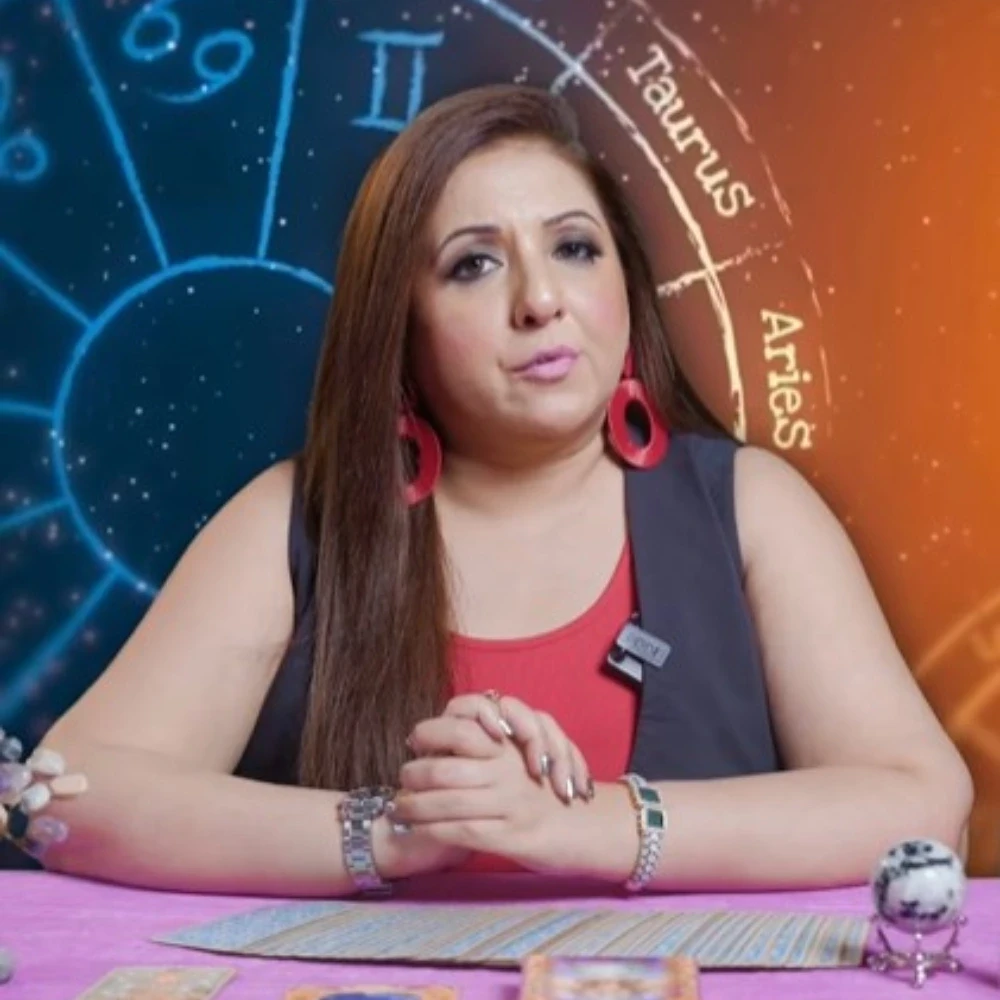10 Polyamorous Relationship Rules for Thriving Non-Monogamy
Discover effective polyamorous relationship rules to navigate multiple partnerships. Establish clear boundaries and communicate for harmonious connections.

Love is a boundless force that knows no limits. For those who embrace the philosophy of polyamory, the notion of loving and being in multiple relationships simultaneously is a heartfelt reality. These relationships require a delicate balance of understanding, communication, and clear boundaries. Polyamorous relationship rules provide structure, open and honest communication, mutual respect, and emotional well-being. Maintaining a good balance requires emphasizing one's well-being and introspection. These rules can help people start a fantastic journey of love, fulfillment, and connection, ultimately paving paths for them to find their own special and genuine polyamorous journey. So, grab your compass, and let's navigate the seas of consensual relationships together.
Understanding Non-monogamy: An Introduction to Polyamory

A polyamory relationship refers to a form of consensual non-monogamy where individuals have multiple loving and romantic relationships simultaneously. Each partner in a consensual relationship is conscious of the partnership and gives their approval. By recognizing that it is possible to fall in love and develop strong emotional ties with numerous individuals at once, this sort of union defies the conventional norm of monogamy. Polyamory emphasizes open communication, honesty, and respect among all partners, intending to foster fulfilling and balanced connections. Depending on the agreements reached by both partners, each consensual commitment may have its arrangement, set of polyamorous rules, and dynamics.
Breaking Down Polyamory: Different Types of Non-monogamous Relationships

Non-monogamous relationships can take various forms, depending on the dynamics and arrangements agreed upon by the individuals involved.
1. V-poly Relationship

One person, commonly known as the "hinge" or "pivot," in this type of monogamy has a strong affection for two persons who may or may not be in an intimate relationship with each other. The two partners are not romantically involved with each other but have a connection through the central person.
2. Triad Or Throuple

A triad or throuple consists of three individuals who are all romantically and/or sexually involved with each other. This can entail several arrangements, such as a closed triad in which all three are exclusively committed to one another or an open triad in which one or more members may have separate relationships besides those inside the trio.
3. Quad

A quad refers to a relationship involving four polyamorous friends. This can consist of two couples who are romantically involved with each other's partners. Similar to triads, quads can have different levels of exclusivity or openness depending on the agreements made within the relationship.
4. Kitchen Table Polyamory

The term "kitchen table" describes a gathering place where couples may converse freely while doing activities like dining, lounging, or engaging in hobbies. This type of multiple relationships emphasizes genuine interaction, affection, and a strong sense of community, regardless of whether the partnerships are romantic or sensual in nature. The focus is on creating a harmonious and interconnected dynamic where everyone feels included and valued.
5. Solo Polyamory

Solo polyamory refers to individuals who prioritize their autonomy and independence while engaging in multiple non-exclusive relationships. They may have intimate connections with multiple partners without seeking a primary or cohabitating relationship.
6. Hierarchical Polyamory

This involves establishing a hierarchy among partners, where one or more individuals hold a primary or central position. Primary partners typically have more time, emotional investment, and decision-making power, while secondary partners have a less prominent role. Hierarchical polyamory often involves clear boundaries and rules to maintain the primary partnership while exploring connections with secondary partners.
7. Non-hierarchical Polyamory

Non-hierarchical polyamory does not prioritize or create a chain of command among partners, in line with hierarchical monogamy. Each relationship is valued equally, and partners have autonomy and agency in shaping the dynamics and commitments within their connections. It aims to promote fair partnerships in which every member is accorded the same dignity and worth.
8. Relationship Anarchy

Relationship anarchy challenges traditional relationship norms and hierarchies altogether. It emphasizes the importance of individual autonomy and allows for the fluid formation and dissolution of relationships based on personal desires and connections. Relationship anarchists believe in creating connections without predefined polyamory rules or expectations, allowing relationships to naturally evolve and adapt over time.
9. Parallel Polyamory

In a parallel polyamorous relationship, the individuals involved maintain separate and distinct connections with their respective partners without much interaction or involvement with each other's partners. Each person focuses primarily on their relationship and has limited or no desire for engagement with their partners' partners.
The key aspect of polyamory is the consensual and ethical nature of multiple loving connections.
Choosing Non-monogamy: How Do Polyamorous Relationships Work?

The foundation of polyamorous partnerships is non-monogamy, which permits people to have numerous partners with everyone's permission. Although it is not a brand-new idea, it has recently acquired popularity. It can offer a choice for individuals who don't want to be celibate but also don't want to hurt their partner by cheating. It can be a good fit for people in long-distance relationships or those who travel often for work.
For a consensual partnership to thrive, effective communication is essential. Transparency, sincerity, and an upfront awareness of each other's limitations and demands are essential. Openness and understanding between partners lay the foundation for a healthy and fulfilling consensual relationship.
It can be difficult to keep up relationships with several partners, especially when a significant connection is at stake. Here are some fundamental principles of how these partnerships function:
1. Consensual Agreements

All parties voluntarily consent to be in non-monogamy and are willing to take part in continuing conversations about the parameters, demands, and arrangements of their romantic lives. All parties are allowed to communicate their requirements, desires, and worries as the process of permission is ongoing.
2. Clear Communication

Open and honest communication is vital in non-monogamous arrangements. Partners engage in frequent and transparent conversations to express their feelings, discuss polyamory boundaries, and address any challenges or conflicts that may arise. Effective communication helps foster trust, emotional connection, and understanding among all partners.
Our contributor Caleb Birkhoff, an experienced LMFT, states the importance of open communication in polyamorous relationships, saying, “Open communication is essential to have polyamorous relationships function well. Without it, you're inviting resentment, mistrust, and jealousy; destined to unravel any potential of a successful relationship. With healthy communication, you will be better able to establish your own boundaries (what you are and aren't comfortable with) and learn those things about your partner(s). This is foundational to creating and growing trust. There is incredible danger in assumptions and mind reading in any relationship, button one that has multiple consenting partners, clear and specific requests for wants and needs will make this relational constellation sustainable.”
3. Personal Autonomy

Polyamorous affairs value personal autonomy and individuality. Each partner has the freedom to pursue connections and experiences that fulfill their needs while respecting the boundaries and agreements set within the relationship. This includes allowing partners to explore their interests, maintain personal space, and make decisions about their relationships.
4. Managing Time And Resources

Balancing time and resources among multiple partners can be a challenge when dating a polyamorous person. Partners work together to allocate time, energy, and attention, taking into account individual needs and commitments. Effective time management, scheduling, and communication help ensure that all partners feel valued and receive adequate quality time.
5. Honoring Boundaries

Establishing and respecting boundaries is crucial in polyamorous engagement. Boundaries can include physical intimacy, emotional involvement, communication with other partners, and more. Each partner's boundaries are discussed, understood, and respected by all involved parties to maintain trust and create a sense of safety within the relationship.
6. Continued Growth And Self-reflection

Non-monogamy relationships encourage personal growth and self-reflection. Individuals engage in self-awareness, examine their own emotions and triggers, and work on personal development. This allows for continuous growth as individuals and as partners, enhancing the overall quality of the relationships.
Respecting each other's privacy, maintaining boundaries, and ensuring mutual happiness and satisfaction are key aspects of maintaining a polyamorous connection. People are capable of navigating difficulties and taking advantage of a polyamorous existence provided they have the appropriate attitude, are open to dialogue, and are flexible.
10 Polyamorous Relationship Rules to Follow for a Successful Relationship

Polyamorous relationships are highly individualized and can vary in terms of structure, agreements, and rules. However, here are ten common rules for polyamorous relationships that couples often consider and discuss:
1. Open And Honest Communication

Effective communication is paramount in polyamory. Partners should openly share their feelings, desires, and concerns, fostering transparency and trust among all parties involved.
2. Consensual Non-monogamy

All partners should agree to engage in non-monogamous relationships and provide informed consent. This means that everyone involved is aware and comfortable with the arrangement.
3. Mutual Respect

Respect is vital in any relationship. Partners must respect each other's boundaries, needs, and feelings. Respecting autonomy and personal choices is crucial for a healthy polyamorous dynamic.
4. Clear Boundaries

To protect the mental and physical health of each companion, it is crucial to set clear limits. Providing insights into the process of balancing self-care and nurturing multiple connections in a polyamorous lifestyle, our contributor Caleb Birkhoff, says, “Self-care is foundational to being able to have the energy and bandwidth to be available to others, and is a way to build and sustain true intimacy with other people. In polyamorous relationships, it's essential to balance multiple connections without sacrificing individual needs.
In such relationships, individuals can experience varying degrees of emotional connection with each partner; which needs to be communicated and negotiated within their ecosystem. It's important for partners to respect others' needs and balance their time and attention. This will be made easier when individuals practice transparency, communicate their intentions, and understand their partners' intentions to avoid misunderstandings.”
5. Safe Intimacy Practices

Partners should prioritize safe practices and discuss their expectations regarding sexual health and protection. Regular communication about health status is important to maintain a safe and responsible environment.
6. Emotional Support And Nurturing

Partners should provide emotional support and actively nurture each other's well-being. This includes practicing active listening, and empathy, and offering care during both positive and challenging times.
7. Honoring Primary Relationships

If there is a primary partnership within a polyamorous relationship, it is essential to discuss and establish guidelines for maintaining the integrity and prioritization of that relationship while exploring connections with other partners.
8. Regular Check-ins

Regular check-ins are crucial to evaluate the dynamics of the relationships, address concerns, and ensure that all partners feel heard and valued. Scheduling dedicated time for open discussions can help maintain a healthy and balanced polyamorous relationship.
9. Compression And Jealousy Management

Compression refers to finding joy in a partner's happiness with others. It is important to cultivate compression and manage feelings of jealousy through open communication, self-reflection, and practicing empathy towards partners' connections.
10. Continual Growth And Adaptation

Poly relationships require ongoing growth, self-reflection, and adaptability. Partners should be open to personal and relationship development, willingly addressing challenges and seeking ways to strengthen their connection.
Each non-monogamous relationship is unique, and partners should openly discuss and establish their own rules and agreements that work best for their specific circumstances and needs. The foundation of a happy and satisfying ethical non-monogamy connection is honest interaction, respect for one another, and dedication to one's development.
Conclusion
Consensual relationships demand a deep commitment to open communication, trust, and personal growth. The rules and guidelines established within these relationships guide the creation of a harmonious dynamic among partners. By embracing polyamorous relationship rules like open communication, consent, mutual respect, and emotional management, individuals can build strong, resilient connections that transcend traditional boundaries. Such relationships offer immense rewards, including deep connections, freedom to explore love and intimacy, and a transformative experience for all involved.
Contributor: Caleb Birkhoff, LMFT - Click here for blog
ALSO READ: 10 Essential Open Relationship Rules for Long-lasting Connections





 JOIN OUR WHATSAPP CHANNEL
JOIN OUR WHATSAPP CHANNEL















































































